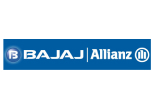How Is The Premium For Endowment Plans Calculated?
Table of Contents
When you're considering investing in an endowment plan, one of the most important things to consider is the premium. This is the fee that your financial institution charges to invest in the plan. In this article, we'll explain how premium is calculated and what factors go into determining it.

Purpose of an Endowment Plan
The purpose of an endowment plan is to preserve capital for future generations. The premium that an insurance company charges for the coverage of an endowment plan is calculated based on a number of factors, including the risks and benefits of the plan.
Types of Endowment Plans
Endowment plans are one of the most common types of retirement savings plans. With an endowment plan, you invest money in a chosen stock or mutual fund and then use the dividends and interest earned on those investments to help pay for your retirement.
There are several different types of endowment plans, each with its own unique features and premiums. This article will discuss three popular types of endowment plans: pre-tax, Roth IRA, and traditional IRA.
- Pre-tax Plans
A pre-tax endowment plan is the most common type of endowment plan. With this type of plan, all of the income generated from your investments (dividends and interest) is immediately taxable. As a result, the premium that you pay for a pre-tax endowment plan is typically higher than premiums for other types of endowment plans. The main reason for this is that you are paying taxes on the entirety of your investment income, rather than just the portion that is later withdrawn as retirement income.
The main disadvantage of a pre-tax endowment plan is that it may penalise you if you make withdrawals before age 70. If you are in a higher tax bracket when you make your withdrawals, the government will levy a penalty on the entire amount of your withdrawal. This penalty is known as an “early distribution penalty” and can be as much as 10% of the withdrawal amount.
- Roth IRA Plans
A Roth IRA plan is similar to a pre-tax endowment plan, but there are two key differences. First, with a Roth IRA plan, all of the income generated from your investments (dividends and interest) is immediately tax-free. Second, you are allowed to withdraw funds from a Roth IRA without incurring any early distribution penalties.
The main advantage of a Roth IRA plan is that it offers tremendous flexibility when it comes to how you use your retirement savings. You can choose to withdraw all of your money at once or pay yourself periodic withdrawals over time.
- Traditional IRA Plans
A traditional IRA plan is similar to a Roth IRA plan, but there are two key differences. First, with a traditional IRA plan, all of the income generated from your investments (dividends and interest) is immediately taxed at regular income tax rates. Second, you are not allowed to withdraw funds from a traditional IRA until you have reached age 59.
The main advantage of a traditional IRA plan is that it offers more stability when it comes to how you use your retirement savings. With a traditional IRA, you are guaranteed to have access to your money until you reach retirement age.
How is the Premium for Endowment Plans Calculated?
Endowment plans are one of the most popular types of retirement savings plans. They offer retirees a guaranteed income for life, along with the potential for growth in the plan’s investment assets. One of the key factors that affect the premium for an endowment plan is the frequency and severity of market volatility.
The premium for an endowment plan is calculated as follows: The annual fee (paid by the employer) multiplied by a percentage (set by the employer) that reflects how often and severely market volatility affects the value of the investments held in the plan. For example, if the employer sets the premium at 5%, then the fee would be Rs. 50 multiplied by 0.05, or Rs. 5 per year.
The premium is based on a number of factors, including but not limited to: how often market prices change; how volatile those changes are; how long you expect to remain in your current plan; and whether you would prefer a higher or lower rate of return than what is offered in the market. This means that premiums vary from employer to employer and may also change over time.
If you’re interested in learning more about endowment plans or want to find the best deal on one, be sure to speak with your employer’s human resources department or a financial advisor. They can help you understand the plan and how it works, as well as provide you with information on available premiums and rates of return.
Conclusion
Endowment plans are some of the most popular retirement savings options because they offer generous payouts over time in exchange for higher contributions. In order to calculate the premium associated with an endowment plan, a financial planner must take into account several factors, including the current market value of the assets and how much money has been paid out in distributions so far. By understanding what goes into calculating the premium, you can get a better idea of whether an endowment plan is right for you and your financial goals.
Also read: Inclusions And Exclusions In Endowment Plans
Know About The Latest Trends Involved In Buying Endowment Plans



























































